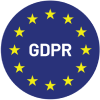Survey data provides actionable insights about customer behavior, preferences, and purchase habits — if companies can effectively analyze and apply this data.
The challenge? Most small business owners, marketing professionals, HR managers, and customer experience teams don’t have degrees in advanced statistical modeling and analysis. With the right approach, however, this level of expertise isn’t required. Read on to discover simple tips for getting started with survey data analysis.
Key takeaways:
- You don’t need statistical knowledge to make use of survey data.
- Both quantitative and qualitative data play a role in understanding customers.
- Data visualizations help turn statistics into action.
- Look for patterns in data to inform next steps. If no patterns emerge, find gaps and follow up with another survey.
The more you know about your customers, the better. According to recent data, 81% of consumers now want personalized experiences, and 70% want this experience to include employees who are equipped with data about past purchases, buying habits, and service histories.
Customer surveys make this type of personalization possible, but only if your business can collect, curate, and analyze survey data at scale. When confronted with the scale and scope of this data, however, staff often feel stuck because they lack formal statistical training. They know there’s value locked away, but are convinced they don’t have the key.
The good news? You don’t need to be a data scientist to make sense of your data. In our getting started guide, we’ll explore simple methods to help turn raw responses into actionable insights.
Preparing Your Survey Data for Analysis
Collecting survey responses is the first step in data analysis, but what follows matters more. Here’s a step-by-step guide to survey data prep:
Step-by-Step Setup
Step 1: Export or download your survey responses, typically as a CSV file or into a spreadsheet.
Step 2: Remove incomplete responses or irrelevant data.
Step 3: Label your question, answer, and other columns clearly.
Step 4: Separate qualitative (text) and quantitative (scale/rating) data.
Step 5: Use tools like Google Sheets or Excel for improved organization.
Pro tip: You can streamline these steps with our SogoSurvey online survey maker which handle many of these tasks automatically.
Understanding Different Types of Survey Data
There are two basic types of survey data: Quantitative and qualitative.
Quantitative data deals with numbers. This data often takes the form of ratings or counts. For example, if you ask customers to rate your service on a scale of 1 to 10, their answer is quantitative.
Qualitative data refers to open-ended answers, which may include opinions or suggestions. Consider the example above. If you ask customers to provide a written opinion about your service, the answer is qualitative.
Depending on the type of data you have, different analysis techniques apply.
Key Metrics to Know
Four key metrics can help you better understand survey data:
Percentage
This is a measure of survey responses out of 100. But what if you don’t have 100 surveys? Multiply the number of answers received by 100, then divide by the total number of surveys. So, if you have 30 responses and 50 total surveys, you multiply 30 by 100 to get 3000, then divide by 50 to get 60%.
Average
To calculate the average, also called the mean, add all survey values and then divide by the total number of surveys. If you have values of 10, 12, 15, 17, and 18, you add them together to get 72. You then divide by 5 to get an average of 14.4.
Mode
The mode is the number that appears most frequently in your data set. Let’s say you ask customers to rate your service on a scale of 1 to 10 and you receive these answers: 6, 7, 9, 8, 8, 6, 9, 8, 7, 8. In this case, your mode is 8 because it appears four times. The other numbers only appear twice.
Pro tip: Don’t worry about standard deviation. While it’s useful for meta-analysis and other functions, you’re better served focusing on what’s clear, meaningful, and can be applied ASAP.
Simple Quantitative Analysis Techniques
As noted by the Harvard Business Review, “organizations are increasingly prioritizing data in their decision-making process.” The caveat? This process can easily go wrong. Reducing this risk means building better surveys and then using simple and effective quantitative analysis techniques, such as:
- Percentages: What percentage of respondents chose each option?
- Averages: What is the mean satisfaction rating on a 1-10 scale?
- Comparisons: Segment data by demographic or customer type.
- Trend spotting: Compare data across time or events.
Built-in analytics from tools can improve both the speed and accuracy of quantitative analysis. Check out how our online survey tool takes care of all your analytics needs.
Analyzing Open-Ended Responses
Open-ended survey data also plays a role in learning more about your customers, but it requires qualitative analysis techniques.
Beginner-Friendly Techniques
- Group similar responses into themes or categories, such as “service”, “support”, or “value”.
- Count how many times each of these themes appears in your survey data.
- Use word clouds or tag systems to create visual representations of these themes.
- Leverage free tools such as MonkeyLearn, WordArt, or Google Sheets formulas to track and manage this data.
Data Visualization for Non-Statisticians
Easy Charts to Use
| Chart Type | Best for | Example Question |
|---|---|---|
| Bar Chart | Comparing categories | “What feature do you use most?” |
| Pie Chart | Showing proportions | “Which department responded?” |
| Line Graph | Tracking changes over time | “How did user satisfaction change over 6 months?” |
| Word Cloud | Highlighting common keywords | “What did you like most?” |
Popular tools for creating data visualizations include Google Sheets, Canva, and Sogolytics’ built-in reports.
Interpreting Results and Drawing Conclusions
Data analysis lets you interpret results and draw conclusions. But what does this look like in practice? Here are five tips.
Tip #1: Look for patterns, not perfection. Numbers won’t always break down evenly, and customer responses can be convoluted or complex.
Tip #2: Focus on majority trends or recurring feedback.
Tip #3: Combine qualitative and quantitative data for improved understanding. For example, if quantitative data shows your average customer service rating is 6/10, qualitative data can help you understand why.
Tip #4: Don’t just analyze — ask questions. These could include “what are people happy/unhappy with?” or “what can we change to improve X/Y/Z metric?”
Tip# 5: If clear patterns don’t emerge after analysis, highlight any gaps and follow up with another survey.
Presenting Survey Findings Effectively
Once you’ve completed your analysis, you need to present your survey findings to leaders, C-suites, or stakeholders.
The most important thing to remember: Keep it simple. Use headlines and visual highlights to capture interest. Sogolytics offers simple templates and auto-generated reports to make data presentation easy. It’s also important to offer 3-5 key takeaways — actionable insights that clearly indicate what’s working, and what needs action.
Survey Says: You’ve Got This
You don’t need statistical training to unlock valuable survey data. With the right tools and the right approaches, you can clean, analyze, and present data that tells a story and drives effective action.
Ready to create and analyze your own surveys without the statistical headache? Try Sogolytics’ free online survey maker today and discover how our intuitive analytics tools can help you uncover valuable insights with just a few clicks. Start your free trial now!
FAQs
How can I analyze survey results if I don’t know statistics?
Analyze results using basic metrics such as percentage, average, and mean, and use powerful survey analysis tools, such as those from Sogolytics.
What’s the best way to interpret open-ended survey responses?
Group responses into categories or themes, then create visualizations to help pinpoint common issues.
Can I use Excel or Google Sheets to analyze survey data easily?
Google Sheets and Excel are useful for storing and organizing data. Solutions such as Sogolytics help you carry out more in-depth analysis.
Are there free tools that help visualize survey data?
Free tools such as Google Sheets and Canva can help you visualize survey data.
What insights should I focus on if I’m short on time?
Focus on issues that impact customer satisfaction, such as low service ratings or issues with product quality.














